China vs. Italy: A Comparative Analysis for Scaling Luxury Eyewear Manufacturing
The best choice between China and Italy depends on your brand’s strategy. For ultra-luxury positioning where brand narrative justifies the highest price points, Italy’s artisanal heritage is a powerful asset. For brands prioritizing speed, scalability, and margin optimization, such as D2C or performance lines, China’s advanced manufacturing infrastructure offers a superior balance of quality and cost. Your decision must align your production reality with your brand promise.
Decoding the “Made In” Label for Brand Value
You must understand that the “Made in” label is a strategic tool for market positioning. Italy’s dominance in luxury stems from decades of cultivated brand perception. This observation means consumers are preconditioned to associate Italian origin with artisanal excellence, a competitive outcome that allows brands to command 30-50% higher MSRPs for comparable products.
The Belluno district is the epicenter of this ecosystem, housing over 80% of Italy’s high-end capacity. This concentration of specialized suppliers and artisans is a key finding. The strategic implication is that it enables rapid prototyping and quality control that is difficult to replicate. This directly translates to a competitive advantage in developing complex, high-value frames, exemplified by LVMH’s €100+ million Thelios facility.
Conversely, China’s evolution from a volume powerhouse to a high-end contender is a critical market observation. Regional clusters like Wenzhou (acetate) and Shenzhen (premium assembly) have developed deep specializations. The strategic implication is that you can now source frames with quality rivaling European standards but with significant cost advantages. This allows you to leverage China’s scale for luxury-grade production, a model proven by EssilorLuxottica, which produces 40% of its frames there.
The Legal Minefield: Ensuring Country of Origin Integrity
Country of origin labeling is a complex regulatory landscape with severe financial penalties for errors. The central rule is “substantial transformation,” where a product’s name, character, or use is fundamentally altered. Simply assembling pre-made parts in Italy does not legally justify a “Made in Italy” label.
Definition: Substantial transformation requires that imported components be fundamentally altered in function and form. For eyewear, this means the final assembly, quality control, and packaging location typically determines the origin marking.
The Kering vs. Selima Optique lawsuit is a clear warning. Kering faced litigation for allegedly marking Chinese-made eyewear as “Made in Italy” after only minimal final assembly. This case highlights a critical risk. The financial outcome of such mislabeling includes civil penalties, merchandise seizure, and class-action lawsuits potentially costing millions.
Best Practice: You must use precise, transparent language. “Designed in Italy, Made in China” is a legally sound strategy that protects your brand’s creative story while acknowledging manufacturing reality. This approach mitigates legal risk and builds consumer trust.
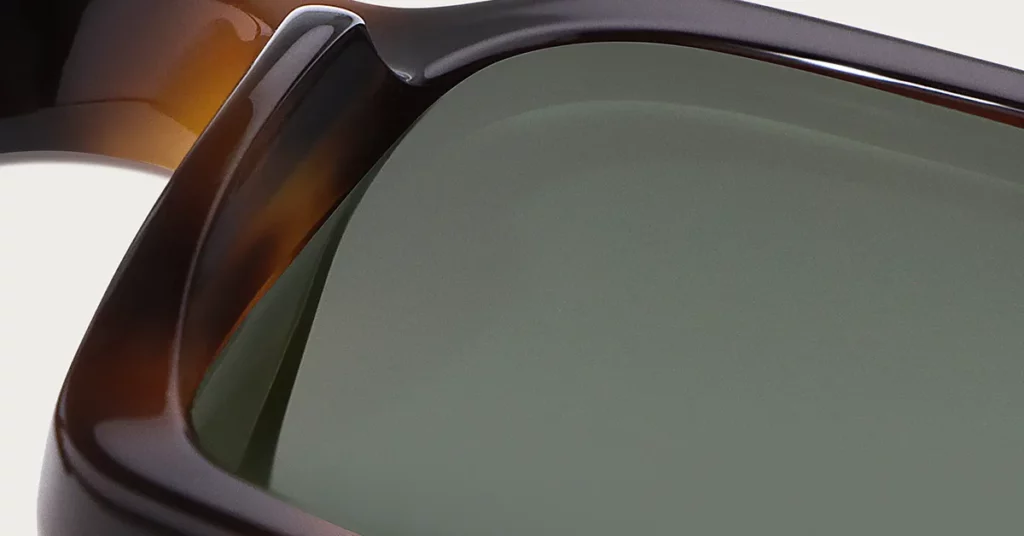
Technical Audit: A Comparative Breakdown of Manufacturing
Your choice of materials and processes is a direct input to your final product cost and perceived quality. You must analyze these variables with forensic detail.
Materials and Components: A Sourcing Showdown
The quality of your acetate is non-negotiable for premium frames. Italian Mazzucchelli acetate is the benchmark, a fact derived from its superior density and color depth from 170+ years of expertise. This means it provides an exceptional finish and hypoallergenic properties, which directly justifies a higher retail price and secures its 60% market share in high-end eyewear.
Top-tier Chinese acetate has dramatically improved, offering a key alternative. This observation means you can access comparable material thickness and customization with shorter lead times and lower costs. The financial outcome is a 40-60% saving versus the Mazzucchelli baseline, making it a viable option for brands needing to optimize margins.
| Feature | Italian Mazzucchelli | Top-Tier Chinese Acetate | Japanese Acetate |
| Quality Grade | Exceptional | Good to Very Good | Very High |
| Thickness Range | 3-8mm | 3-10mm+ | 3-6mm |
| Color Depth | Extremely Vibrant | Moderate to Good | Moderate |
| Durability Rating | Excellent | Good | Exceptional |
| Cost Premium | 100% (Baseline) | 40-60% Savings | 80-120% of Baseline |
| Lead Time | 6-8 Weeks | 3-4 Weeks | 8-10 Weeks |
Pro Tips: While Mazzucchelli commands the luxury narrative, you should demand samples from top-tier Chinese and Japanese suppliers. The quality improvement in Chinese acetate over the last five years is significant, and your decision should be based on physical testing, not outdated perceptions.
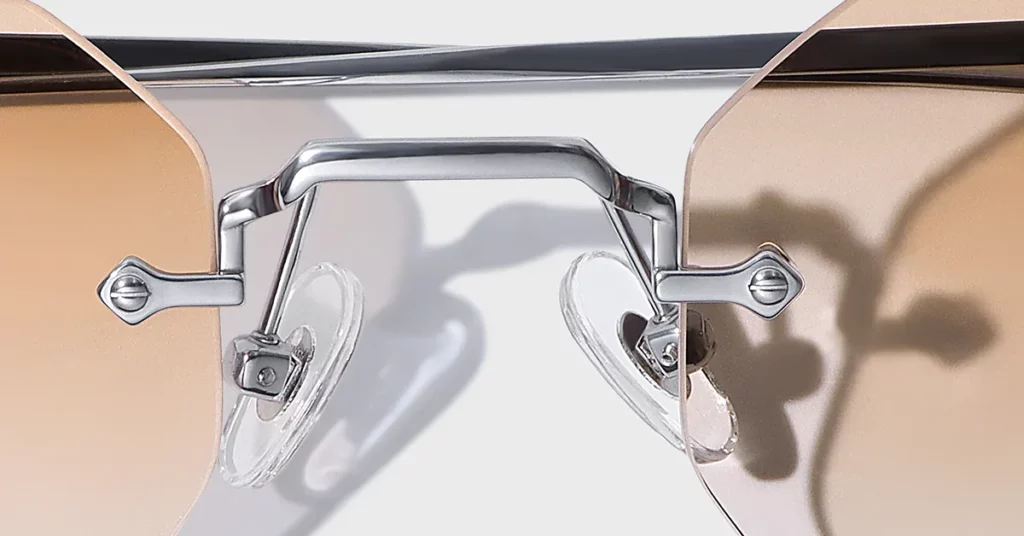
For metal frames, Japanese titanium from the Sabae region offers unmatched precision. This technical fact means you get superior strength-to-weight ratios and 99% fitting tolerances. The strategic outcome is a frame ideal for luxury positioning where durability and comfort are paramount. Chinese metal manufacturing, in contrast, offers diverse alloys and automated precision, providing a scalable and cost-effective solution for volume luxury brands.
Craftsmanship vs. Automation: A Process-Level Comparison
The Italian method’s value is in its multi-stage hand-polishing. This traditional process involves 5-7 distinct steps using specialized compounds. The functional implication is a unique tactile quality and subtle finish that automation cannot replicate. This directly translates to a product that feels artisanal, justifying a 40-60% increase in manufacturing expense but reinforcing a luxury story.
The Chinese method leverages CNC precision and automated quality control. This technological approach achieves consistent tolerances within 0.1mm specifications across massive production runs. The strategic outcome is scalable consistency and speed, which is critical for global brands requiring predictable quality and inventory flow.
The Bottom Line: The optimal approach is a hybrid model. Use CNC automation for structural integrity and precision cuts, then apply strategic hand-finishing for visible surfaces. This gives you 80% of the artisanal quality at 60% of the cost, balancing brand story with scalable production.
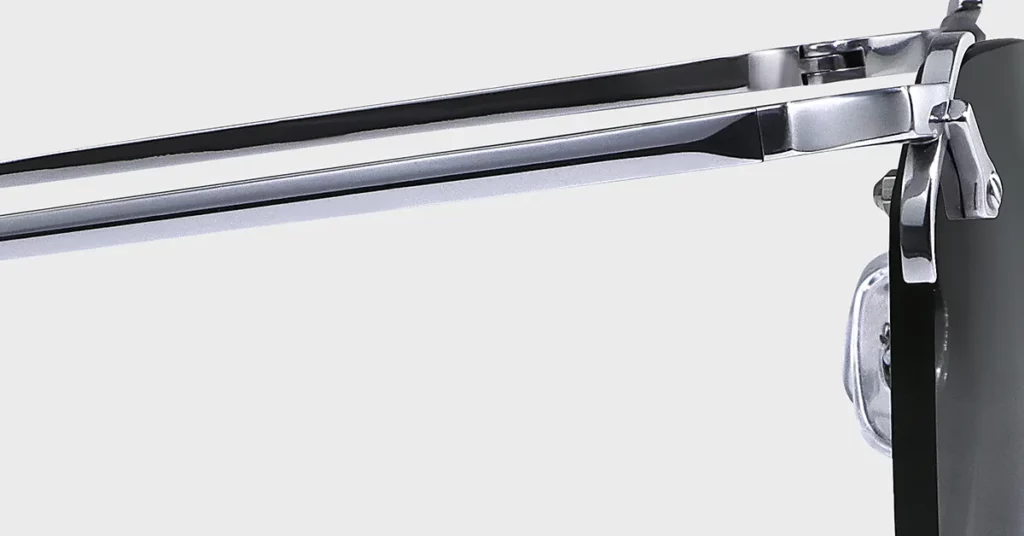
Calculating the True Landed Cost: A Financial Model
You must look beyond the per-unit price to understand the true landed cost. This requires a forensic breakdown of all expenses from factory floor to warehouse.
| Cost Component | Italian Manufacturing | Chinese Manufacturing | Strategic Consideration |
| Unit Cost | 2.5-3.5x Higher | Baseline | Directly impacts gross margin per unit. |
| Labor Rate | €25-35 / hour | $3-6 / hour | Partially offset by Italian automation and productivity. |
| Tooling/Molds | $15,000 – $25,000 | $3,000 – $8,000 | Italian tooling offers longer life, better for high-volume styles. |
| Logistics | $2.00-$3.00/frame (Air) | $0.50-$1.50/frame (Ocean) | Chinese shipping is cheaper but slower (4-6 weeks vs. 1-2). |
| Management | Lower Overhead | 8-12% Higher Overhead | Chinese projects require more oversight for communication and QA. |
Key Metric: When all factors are calculated, the total landed cost for Chinese production typically delivers a 35-50% savings versus comparable quality from Italy. This finding means you can either pass savings to the consumer for a competitive edge or reinvest the difference into marketing and brand building.
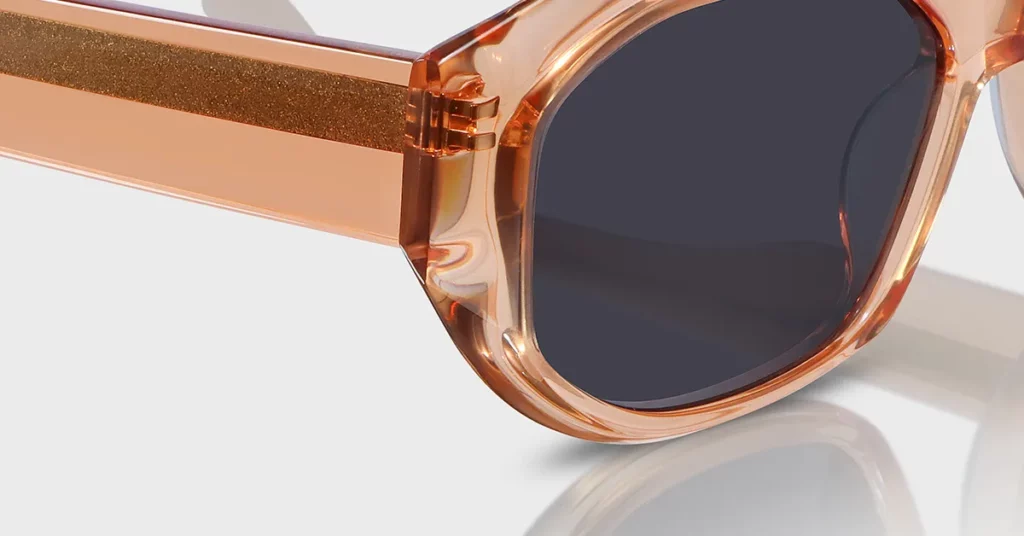
Supply Chain Analysis: Speed, Scale, and Risk
Your supply chain’s maturity dictates your brand’s agility. An analysis of Minimum Order Quantities (MOQs) reveals a key difference. Chinese factories typically require 300-500 pieces per style/color, while Italian factories often need 100-300 pieces.
This observation has direct strategic implications. China’s higher MOQs are paired with lower costs, making it accessible for startups. Italy’s lower MOQs come with premium pricing, which can be prohibitive for small batches.
For Example: A startup launching with 5 styles in 3 colors must plan for a minimum investment of $45,000-$75,000 in China versus $120,000-$200,000 in Italy just for the initial production run.
Ecosystem density is another critical factor. Italy’s Belluno district offers unmatched proximity to specialized suppliers, a finding that implies you can reduce development time for complex projects by 30-50%. China’s manufacturing regions offer comprehensive sourcing but may require more logistical coordination.
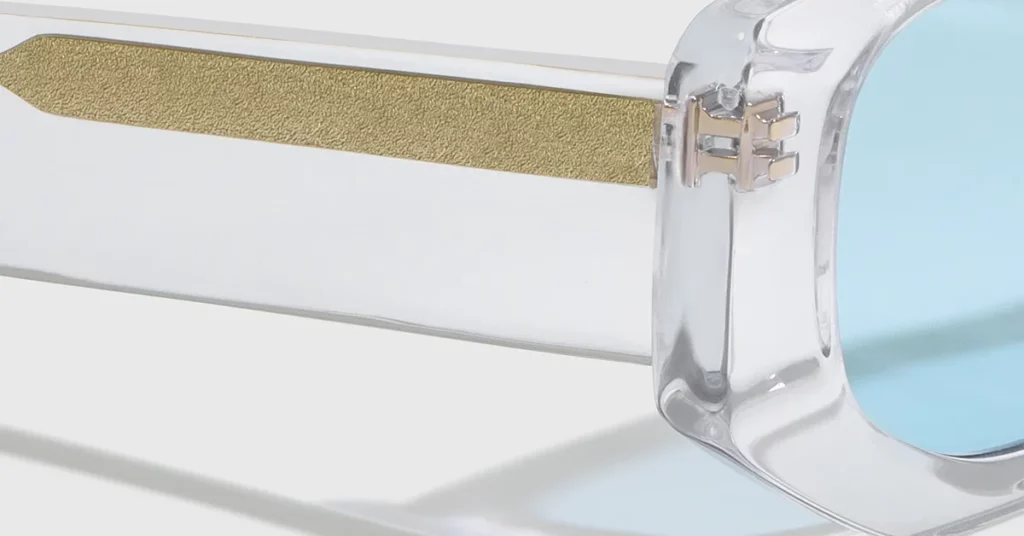
Vetting for Sustainability and Ethical Compliance
Modern consumers demand supply chain transparency. You must vet partners for eco-conscious materials and ethical labor practices. Italian manufacturers like Mazzucchelli lead in developing bio-based and recycled acetates. This means they provide a clear narrative for sustainability-focused luxury brands.
Chinese manufacturers increasingly offer sustainable options, but they require more rigorous verification. The strategic implication is that while you can achieve sustainability goals in China at a lower cost, you must invest more in third-party audits and certifications to ensure compliance and protect your brand’s reputation.
Best Practice: Always demand documentation. Request certifications for recycled metals, chain-of-custody for bio-acetates, and recent social compliance audit reports (like SMETA or BSCI). Never rely on a factory’s self-declaration.
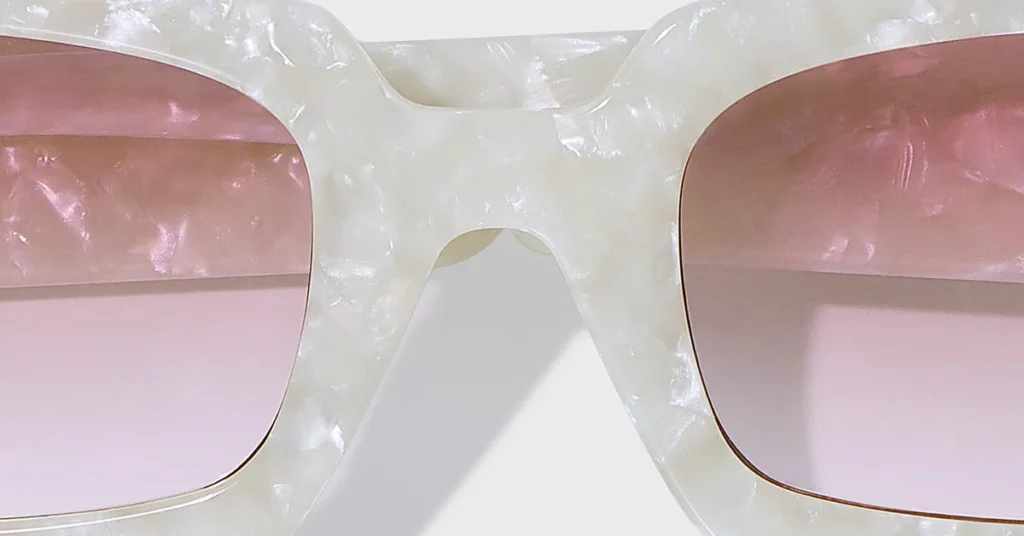
The Implementation Playbook: Your Sourcing Decision Matrix
Your choice is a direct reflection of your business model. There is no single “best” option.
- For Heritage & Ultra-Luxury Brands: You must align sourcing with your narrative. The artisanal provenance of Italian manufacturing provides irreplaceable brand value that justifies a premium price point. Your manufacturing location is a core part of your story.
- For E-commerce & D2C Brands: You must prioritize speed, agility, and margin. Chinese manufacturing provides the optimal balance of quality, cost, and flexibility needed for frequent design updates and competitive pricing.
- For Performance & Sportswear Brands: You must focus on technical innovation. Chinese manufacturers excel in advanced materials processing, smart eyewear integration, and durability testing required for high-performance applications.
Risk Mitigation and Legal Protections
Protecting your intellectual property is paramount, especially in China. A standard NDA is insufficient.
Critical Warning: You must use a Non-disclosure, Non-use, Non-circumvention (NNN) agreement. This is because an NNN is designed to prevent a factory from becoming your competitor. This agreement must be written in Chinese, governed by Chinese law, and enforceable in Chinese courts to be effective.
An OEM (Original Equipment Manufacturing) model gives you maximum design control but requires deep technical oversight. An ODM (Original Design Manufacturing) model offers speed and cost-efficiency by using a factory’s existing designs. Choose the model that aligns with your in-house design capabilities and time-to-market needs.
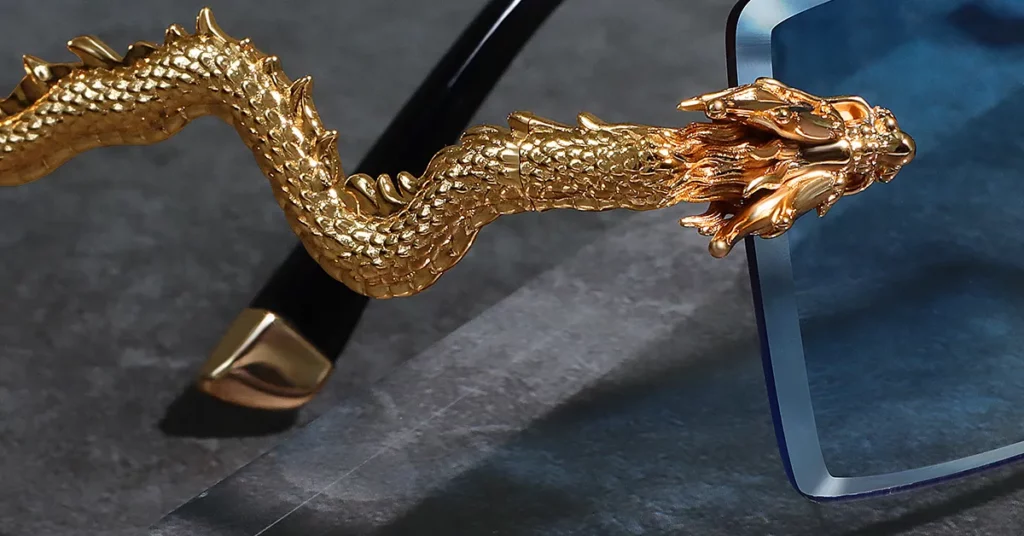
Conclusion
The choice between China and Italy is a strategic decision that defines your brand’s competitive position. Italian manufacturing is the right tool when brand heritage and artisanal narrative are your primary value drivers. Chinese manufacturing delivers an unmatched balance of advanced quality, scalability, and cost efficiency for brands built on agility and market responsiveness.
As your strategic partner, we help you align your manufacturing reality with your brand promise to build a profitable and defensible supply chain.
Frequently Asked Questions
1. What high-performance materials are specific to one region?
Japanese titanium from Sabae offers unmatched precision, while German stainless steel is known for corrosion resistance. Chinese manufacturers excel in advanced polymers like TR90 and smart materials. Italian suppliers lead in premium bio-acetates. Sourcing is global, but regional expertise varies.
2. For a startup, how does China’s MOQ compare to Italy’s brand value?
China’s higher MOQs (300-500 units) are more accessible due to lower costs, suiting D2C models that need to test the market. Italy’s lower MOQs (100-300 units) come at a premium price, which is only justifiable if your brand can immediately command a high retail price based on the “Made in Italy” story.
3. How has IP protection in China evolved for eyewear designs?
Chinese IP enforcement has strengthened via specialized courts. However, protection is not automatic. You must proactively register trademarks and designs in China and use a Chinese-language NNN agreement governed by Chinese law for your IP to be defensible.
4. What are the key differences in QC documentation?
Top-tier Chinese manufacturers provide data-heavy digital documentation, including statistical process control (SPC) data and automated inspection reports. Traditional Italian factories often provide documentation focused on material provenance and records of artisanal processes.
5. If I use Italian acetate but assemble in China, what is the legal label?
The country of origin is determined by “substantial transformation,” which is the final assembly. The correct label is “Made in China.” Best practice for transparency is to state, “Designed in Italy, Made in China with Italian Acetate” to protect your brand while staying legally compliant.